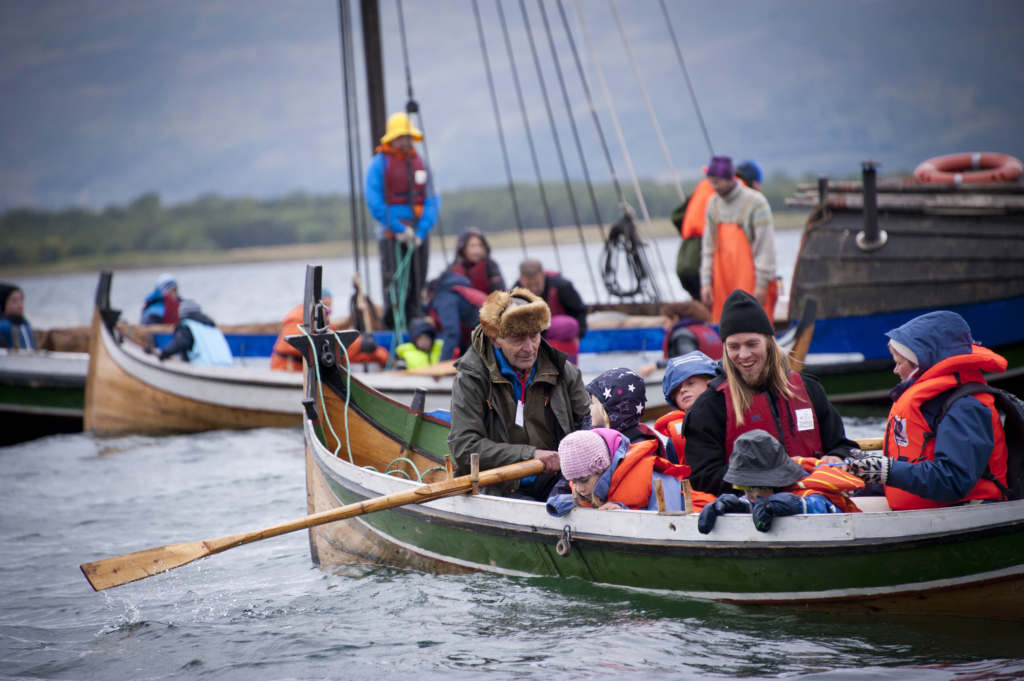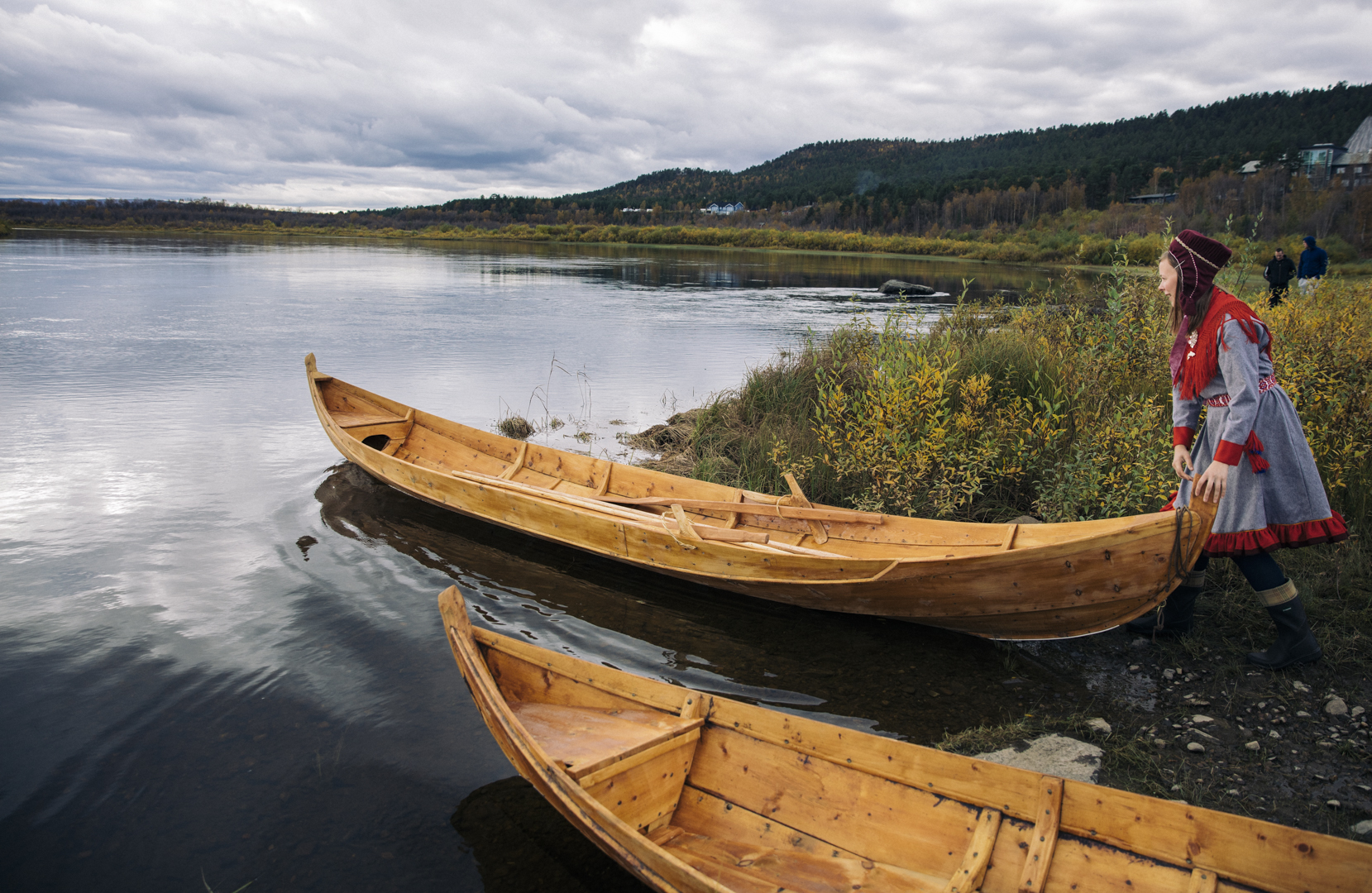Nordic boat tradition added to exclusive Cultural Heritage list
The Nordic tradition of building and using clinker boats has been inscribed on UNESCO’s Representative List of the Intangible Cultural Heritage of Humanity. This confirms that the international community values the clinker boat heritage, and that the tradition and knowledge behind it must be safeguarded for future generations.

“This is extremely gratifying. The inscription is recognition of traditions that are helping to safeguard the knowledge possessed by local communities and countries within the Nordic region. Today, these traditions and knowledge live on and these cultural expressions are part of our shared Nordic heritage, says Ole Jakob Furset, Head of the Cultural Heritage and Museums section at Arts Council Norway.
This is the first time UNESCO has received a joint nomination from the whole Nordic region. All the Nordic countries have joined forces to prepare for the nomination, which was signed by all the Nordic ministries of culture. The nomination was also signed by around 200 communities and cultural bearers in the field of construction and traditional craftsmanship of clinker boats, including Sámi and Kven/Norwegian-Finn communities.
Norway already has the Oselvar Boatbuilding Workshop, the Setesdal folk music and dance tradition and the Nidaros Cathedral Restoration Workshop inscribed on UNESCO’s intangible cultural heritage lists.

A 2000-year-old tradition
Have you ever walked along a quayside and wondered about the boats tied up there side-by-side, bobbing in the water? They all have a function, and they all have a history. Our oldest boats played a crucial part in people’s lives. They transported food, people, and traded goods. These boats took the Nordic region out into the world – and brought the world back to the Nordic region. You have probably seen the huge Viking ships, like the Norwegian Gokstad Ship. These were built using the clinker method. The Vikings are well known for for raiding and pillaging, but they used small boats for all kinds of day-to-day activities. Today, however, the boats are mainly used as leisure craft, here in the Nordic region.
The clinker-built wooden boats have a history stretching back at least 2000 years. The technique involves fixing the overlapping strakes or planks of wood in a special way, using iron or copper nails. A lot of the tools used today are still the same as those traditionally employed: axes, planes, clamps, and plumb bob gauges. Many boatbuilders also make their own tools.
It is this knowledge, which has been passed on from generation to generation, that constitutes the intangible cultural heritage. For the tradition is about more than building and maintaining the boats. It covers everything from the knowledge and skills needed to build a boat and the communities that keep them alive, to knowing how the clinker boat is used by different communities across the Nordic region.
A cornerstone of coastal culture
Clinker-built boats have been fundamental to life along the Nordic coastline since time immemorial. The boat was the cornerstone of coastal people’s culture, and it remains important to this day. Intangible cultural heritage forms the basis for identity and a sense of belonging in a contemporary society.
When we learn about our own historical customs, skills, practices, and the knowledge of those who lived before us, we also learn about ourselves. In the same way, we can better understand others when we learn about their culture, their artistic expressions, oral traditions, customs, practices, rituals, and celebrations. Intangible cultural heritage is about cultural encounters between people all over the world.
The nomination refers to traditions that are helping to safeguard the knowledge possessed by different local communities and countries within the Nordic region. Today, that knowledge and those traditions are alive and well in several local communities, and these cultural expressions form part of a shared Nordic identity.
A community based initiative
The Norwegian Coastal Federation led the project to get the clinker boat tradition inscribed on the UNESCO list. For many years, the organisation has worked to gain support for the idea among various boatbuilders, associations and organisations, museums and users who are interested in this tradition across the Nordic region. The process has provided an overview of how things stand for the tradition and the transmission of knowledge among practitioners, associations, and organisations in all the Nordic countries that endorsed the initiative.
“We have put a lot of resources into this effort, and it has been a rewarding process. That is why it is particularly gratifying that our work has paid off,” says project manager Tore Friis Olsen from the Norwegian Coastal Federation.
How can UNESCOs list lead to safeguarding?
Clinker-built boats may be solid – but knowledge is fragile. The boatbuilders are growing older, and new apprentices are few and far between. The intangible heritage cannot be protected in the same way as the tangible cultural heritage – here, it is the mind that knows, and the hands that have the practical skills. So, we must pass on both expertise and skills from mind to mind, and hand to hand.
It is therefore vital that we do what we can to safeguard the foundations for such knowledge to be passed on, to take care of something that has been essential for Nordic people for centuries. Cultural heritage is also a matter of living traditions and traditional knowledge that must be passed on through practical interaction and active learning. The driving force behind this work is engagement in boating and coastal life, in the climate and the environment, and in fellowship between people. Inscription on UNESCO's list requires a commitment on the part of the States Parties and the communities that are endeavouring to preserve and pass on the tradition to continue working together going forward.
“We have worked on this nomination for many years, and we are seeing more and more of those who are interested in the tradition becoming aware of its complexity and realising the value of this work,” says project manager Tore Friis Olsen from the Norwegian Coastal Federation. Arts Council Norway’s head of section Ole Jakob Furset sums it up in this way:
“Those who use the boats are important, and those who pass on their knowledge about the tradition are important too. Those who practise the tradition, whether it be building boats or using them, are at the very heart of it all.”
Facts about the UNESCO convention
The Convention for the Safeguarding of the Intangible Cultural Heritage was adopted in 2003. Norway ratified the international Convention in 2007. The other Nordic countries ratified the Convention at around the same time. The purpose of the Convention is to increase respect for and knowledge of the intangible cultural heritage.
Arts Council Norway is responsible for implementing UNESCO’s Convention for the Safeguarding of the Intangible Cultural Heritage, and is the Norwegian Ministry of Culture’s competent body in this field. To make the diversity of the intangible cultural heritage visible worldwide, UNESCO has created three lists:
- List of Intangible Cultural Heritage in Need of Urgent Safeguarding
- Representative List of the Intangible Cultural Heritage of Humanity
- Register of Good Safeguarding Practices